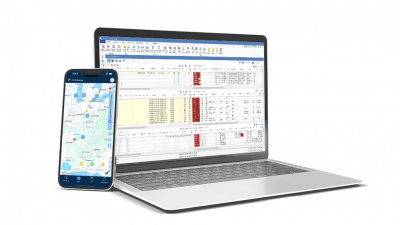Have you ever wondered how other companies can deliver goods quickly and efficiently? Most likely, they use a Transportation Management System (TMS) that helps them plan, execute, and streamline the transportation of goods. This software already offers a lot of benefits, but with TMS optimization, you can get even more functionality.
In this article, you’ll discover why optimizing your TMS is crucial for saving time and money and learn about strategies you can use for TMS optimization.
Why Is TMS Optimization Important?
Within the logistics and supply chain industry, you may encounter common challenges such as delays, high costs, and customer dissatisfaction. TMS optimization can help with these challenges by highlighting possible problems before they become deal-breakers.
Making full use of your TMS means better route planning, reduced fuel consumption, and data that helps you make better decisions.
TMS Optimization Strategies for Shippers and Carriers
Here are some TMS optimization strategies you can implement to help you get the most ROI from your TMS and improve operations as much as possible.
Use Data for Strategic Decision Making
A TMS can empower the supply chain, giving you valuable data to help you make strategic decisions. You want to gather as much data as possible, such as transportation performance, costs, and carrier effectiveness, so your TMS can transform this raw data into actionable insights. These actionable insights come in the form of detailed reports and dashboards, which help to enhance financial management and operational strategies.
If you can provide your TMS with historical data, it can perform trend analysis to pinpoint areas that need improvement and negotiate favorable terms with carriers. Thus, your TMS can help cut costs and improve delivery.
Automate Operations
Most industries are finding ways to leverage their TMS to make improvements and enhance efficiencies. You can use AI and machine learning features in your TMS to make sense of the vast datasets you’ve gathered and identify correlations and patterns in your data.
Your TMS can help you:
- Improve routing: By analyzing historical transportation data, AI can predict the best routes to minimize travel time, reducing fuel costs and improving customer satisfaction.
- Schedule vehicle maintenance: Using your data on miles driven and, last maintenance performed, your TMS can predict when a vehicle may need maintenance. This allows you to schedule repairs to avoid disruptions and unplanned downtime proactively.
- Get the best pricing: Your TMS can help you understand the optimal price for each load based on your demand, capacity, equipment type, mileage and fuel costs.
Unlock the Secrets to TMS Success!
Download our free Buyers Guide and learn how to choose the right TMS to optimize your fleet, cut costs, and drive growth.
Incorporate Smart Technologies in Fleet Management
Smart technologies include software, hardware, or communication features you can integrate into your TMS to optimize the performance of your fleet management.
Smart Fleet Technology can integrate with your TMS to give you a more comprehensive view of your fleet. This can combine real-time location data, driver performance metrics, and fuel usage from Smart Fleet Technology with your TMS’s order management and dispatching functions. This joined-up approach can improve efficiency, optimize routes, and ensure timely deliveries.
Here are some examples of Smart Fleet Technology:
- GPS Tracking: Real-time location monitoring of vehicles for better route planning and dispatching.
- Telematics: Data collection systems that track engine performance, fuel usage, and driver behavior to improve safety and efficiency.
- In-Vehicle Cameras: AI-powered dashcams can monitor driver activity and identify risky behaviors like speeding or distracted driving.
Customize and Scale Your TMS Solutions
Some TMS solutions are standard out-of-the-box with limited features to help your business.. However, as your company starts to scale, consider a comprehensive TMS with accounting or financials built-in and a mobile app for drivers.
A good option is to look at a cloud-based TMS, offering a more cost-effective and adaptable solution. While on-premise systems require expensive hardware, software licenses, and dedicated IT staff, cloud-based TMS operates on a subscription model, with easy updates and minimal IT burden. This frees up resources and allows you to scale your transportation management up or down easily as your business needs evolve.
Master TMS Optimization With PCS TMS
A TMS is a standard for anyone in the logistics industry, but you can take that technology one step further with TMS optimization. This article mentions many options available that can increase your company’s efficiency.
One solution that’s perfect for TMS optimization is PCS TMS. PCS Carrier TMS includes a mobile app to communicate with drivers more easily, and it provides detailed reports to analyze and make better decisions. PCS Shipper TMS uses AI to optimize routes, allows you to personalize your workflows, and integrates seamlessly with your entire tech stack.
To discover more about how PCS TMS can improve your logistics operations, visit our blog or request a demo to see these solutions in action.


